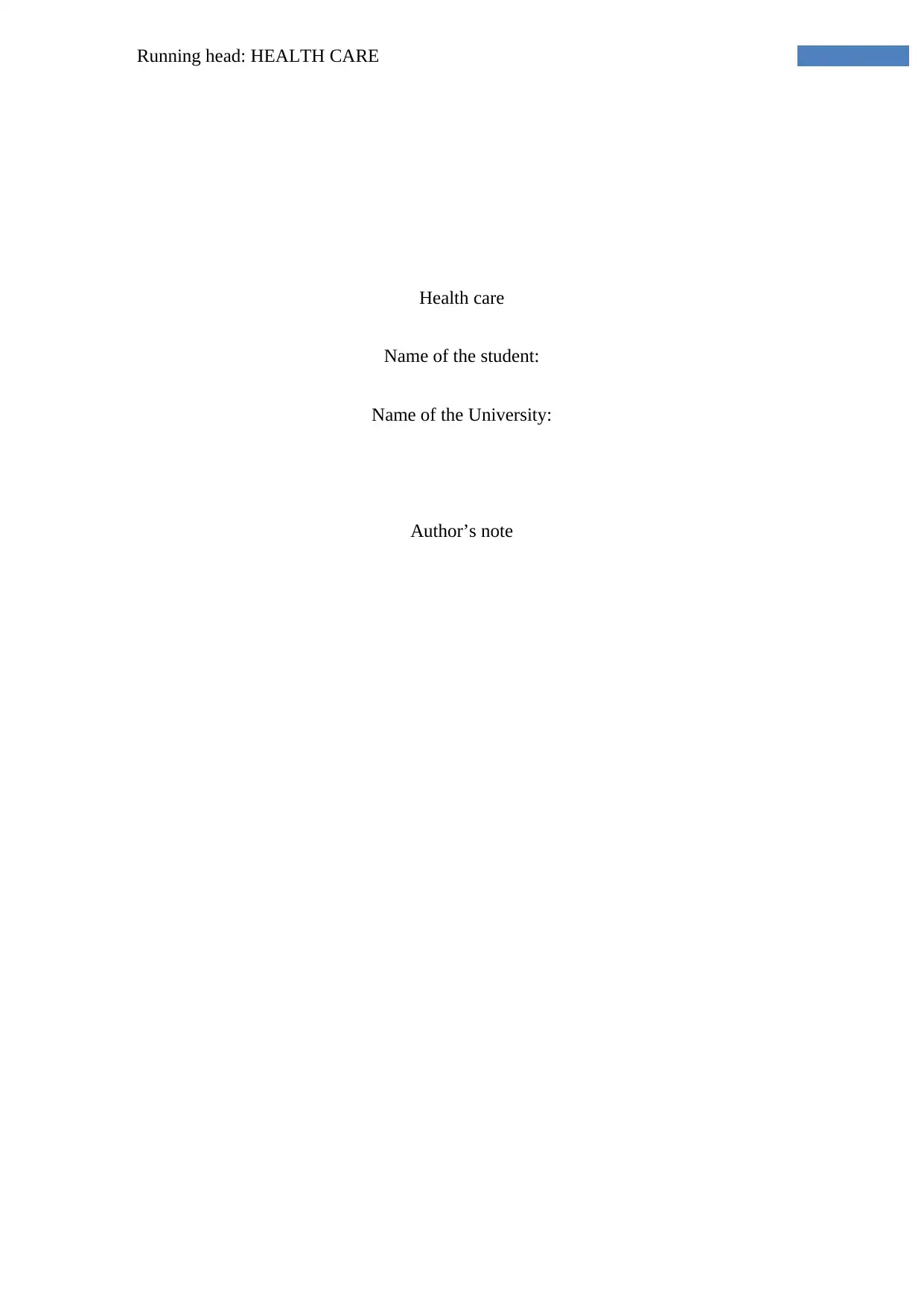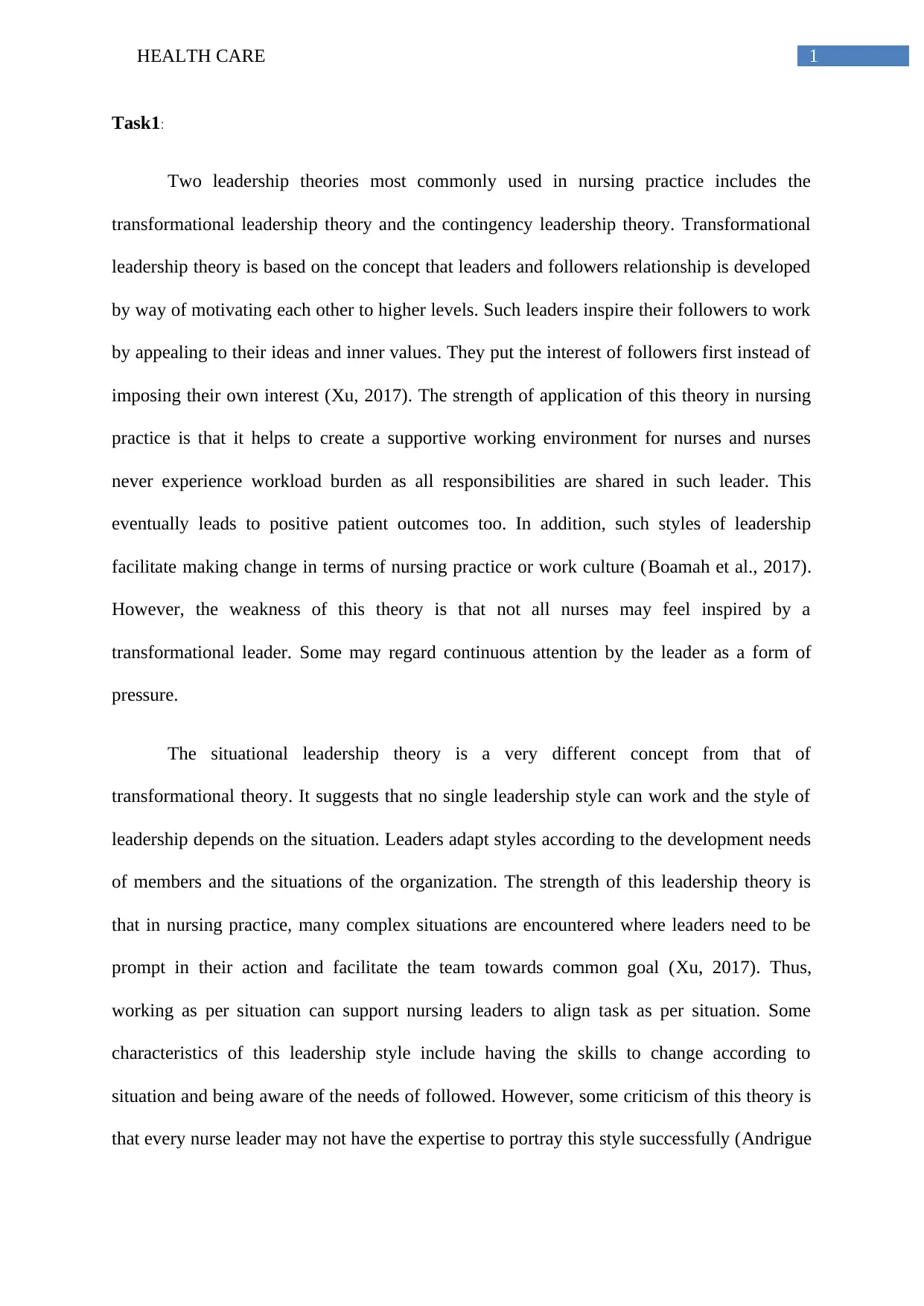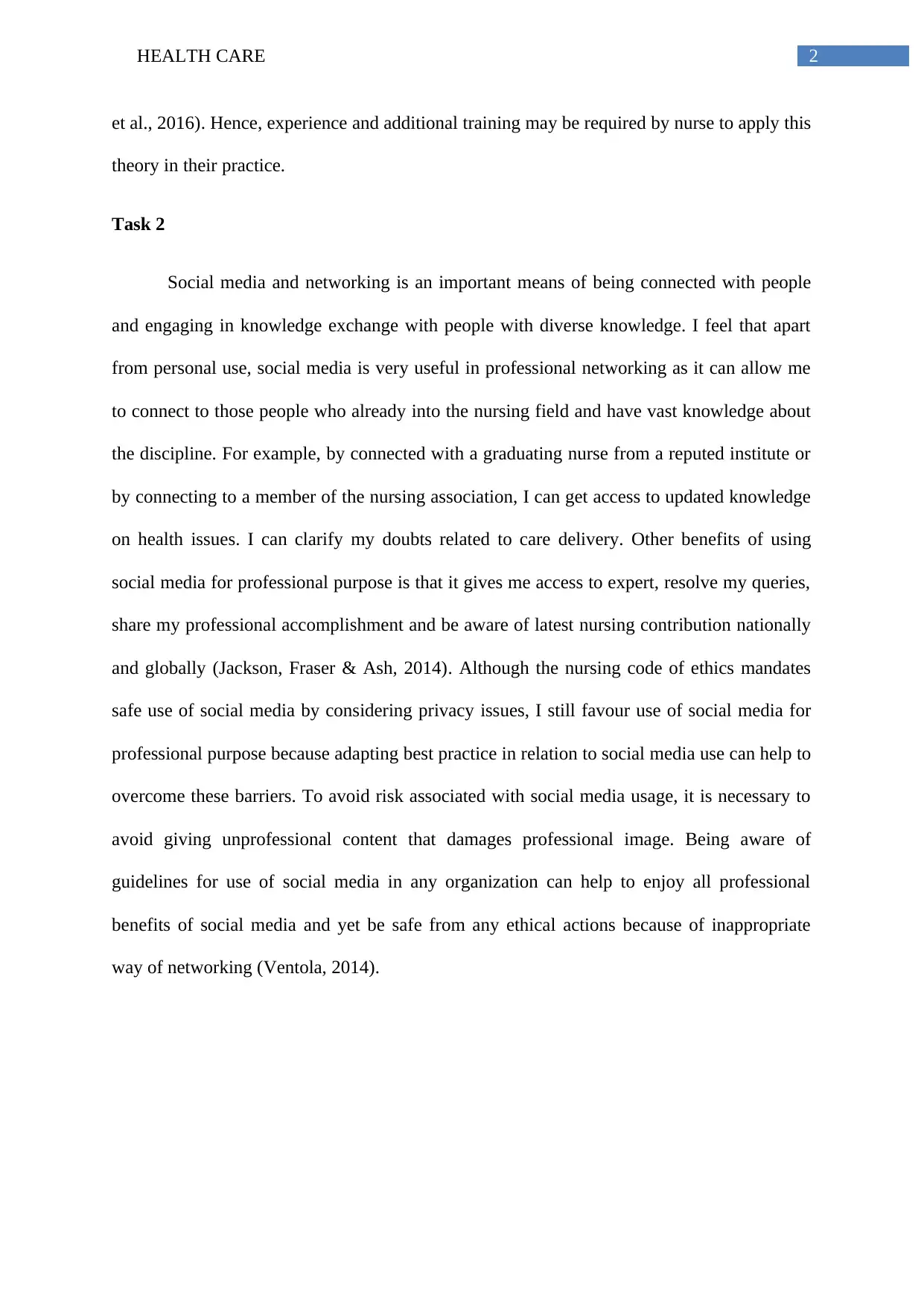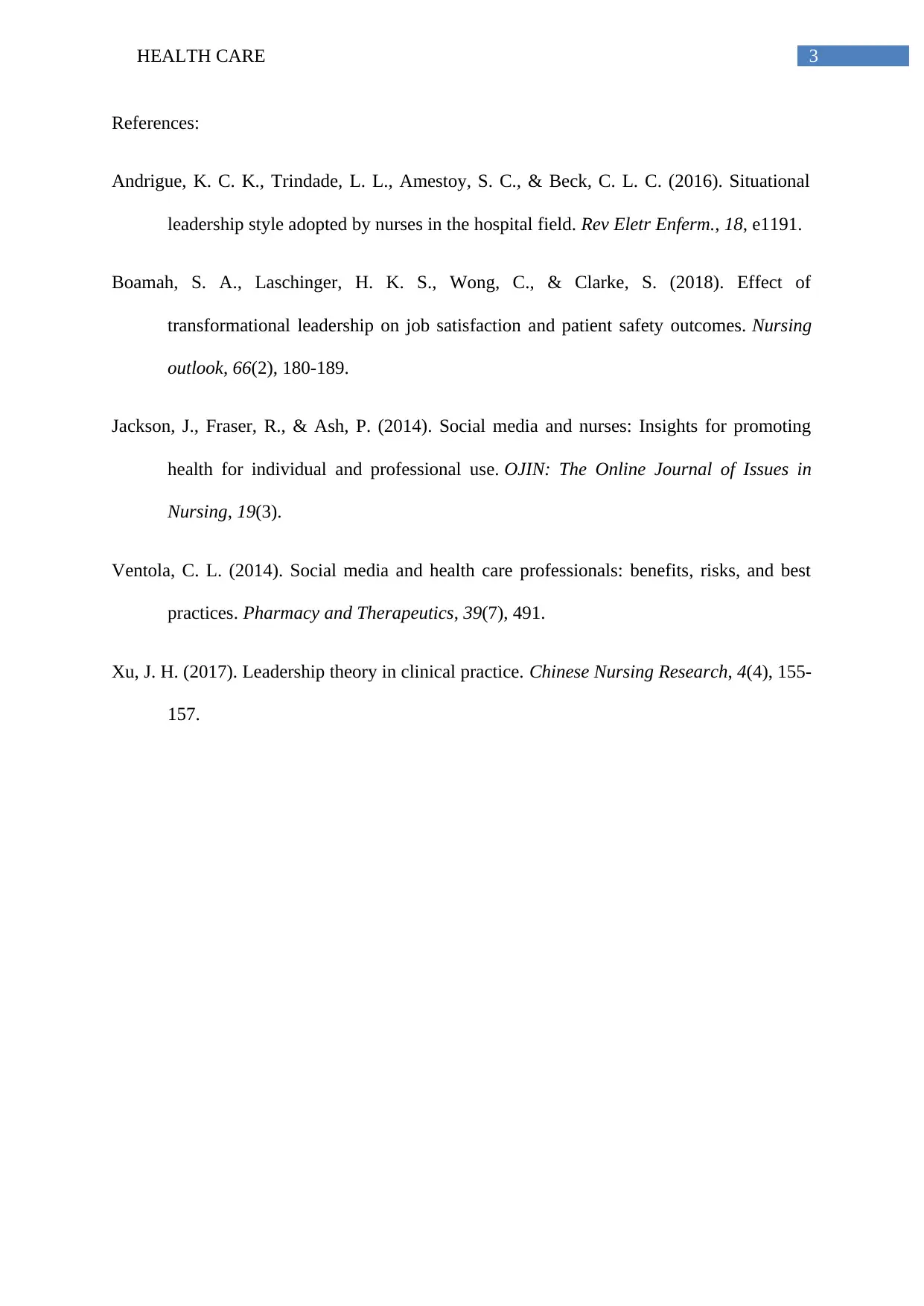Exploring Leadership Theories in Healthcare & Social Media in Nursing
VerifiedAdded on 2022/08/12
|4
|854
|16
Homework Assignment
AI Summary
This assignment delves into two prominent leadership theories in nursing: transformational and contingency leadership. Transformational leadership, which focuses on inspiring and motivating followers, is examined for its strengths, such as fostering a supportive work environment, and weaknesses, like potentially feeling overwhelming for some nurses. Contingency leadership, which emphasizes adapting leadership styles to different situations, is also explored, highlighting its adaptability in complex healthcare scenarios, while acknowledging that not all nurses may possess the necessary expertise. The assignment further investigates the role of social media in professional networking, emphasizing its benefits for knowledge exchange and access to expert insights, while also stressing the importance of adhering to ethical guidelines to avoid risks associated with unprofessional content. References are provided to support the discussed theories and concepts.
1 out of 4











![[object Object]](/_next/static/media/star-bottom.7253800d.svg)